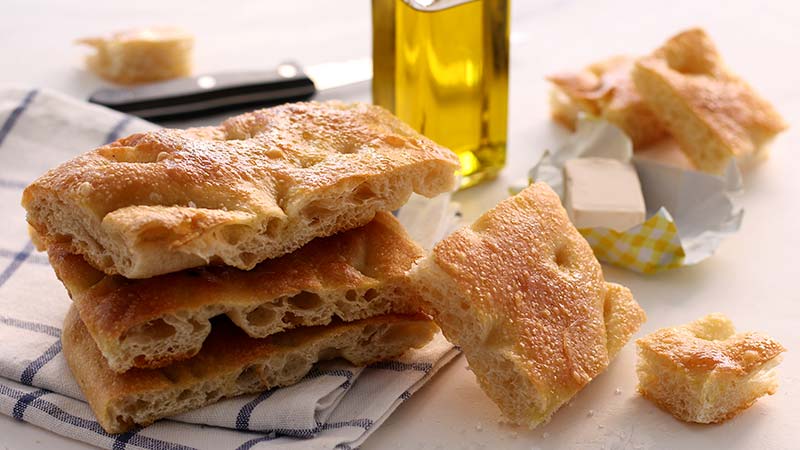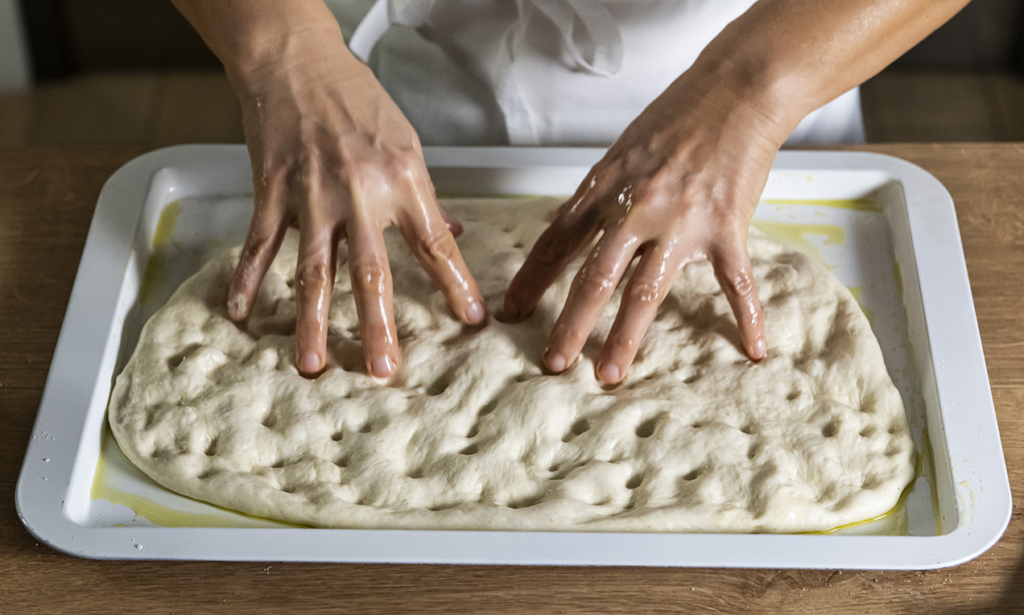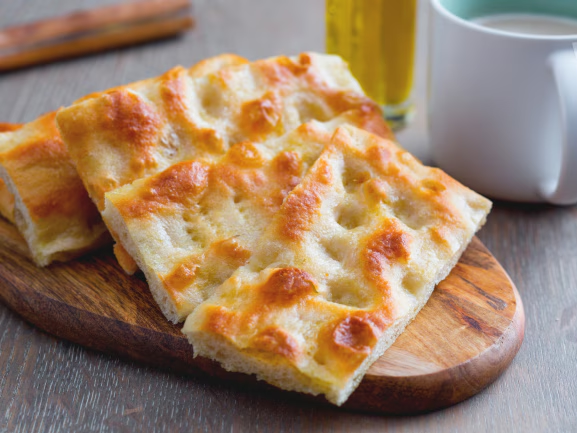Focaccia Genovese: Original Recipe and Tricks

One of the symbols of Ligurian culinary tradition is the celebrated fügassa, also known as focaccia genovese, prized for its unique texture: soft on the inside and crispy on the outside. This Ligurian focaccia, also recognized among the products promoted by Slow Food, is prepared with a few simple and genuine ingredients: wheat flour, water, salt extra virgin olive oil and brewer’s yeast. The secret lies not only in the ingredients for Genovese focaccia, but in the processing of the dough, the rising times and the baking of the focaccia. To make the perfect Genovese fugassa, it is essential to follow certain steps precisely: the dough must be well hydrated and allowed to rise for at least two hours. Next, it is rolled out on the baking sheet greased with plenty of oil and left to rise again. Before baking, the classic dimples are made by pressing with the fingers and a focaccia brine made of oil, salt and water is poured in, which fills the holes and imparts flavor and browning. For focaccia baking, we recommend using a ventilated oven preheated to 220°C, placing the pan in the center. This ensures even baking and the characteristic golden crust. Those using an old-fashioned wood-burning stove can achieve an even more authentic fragrance, enhancing the flavor of Genoese-style focaccia. By following these steps, a true original Genoese focaccia can also be prepared at home, possibly adapting it to different tastes. Genovese flatbreads in mini format are ideal for a buffet or appetizer, while variations with onions, olives or cherry tomatoes turn Genovese pizza into a complete dish.
Index
How to Make the Perfect Focaccia Genovese
To make a soft and authentic Genoese focaccia recipe, high quality ingredients must be chosen: “00” flour, water, fresh brewer’s yeast, salt and extra virgin olive oil. Preparation starts by dissolving the yeast in warm water with a pinch of sugar to activate it. The flour is gradually added, avoiding lumps, until a smooth dough is obtained. After adding the oil, knead vigorously, cover and leave to rise until doubled in volume. After this time has elapsed, the dough is rolled out into a rectangular baking pan greased with oil. The characteristic dimples are made and the focaccia brine is poured in. After a second rising for about 45 minutes, it is baked in a 220°C ventilated oven for 15-20 minutes. Be careful not to exceed the indicated time to prevent the focaccia from drying out. Once golden brown, take it out of the oven and let it cool. Here you have a fragrant Ligurian focaccia original recipe ready, to be enjoyed for breakfast, snack or as an appetizer.

Tips for Ideal Baking of Focaccia Genovese
To achieve a true Genovese focaccia, every detail must be taken care of. The dough must be soft, elastic and well hydrated. Leavening, if done correctly, gives lightness and fluffiness. Baking the focaccia must be done in a well-heated oven, preferably static or ventilated, but always with the baking sheet in the center. Before baking, it is essential to brush the surface with oil and sprinkle it with coarse salt or rosemary. Some people use less conventional ingredients, such as seal fat, but for a genuine recipe it is advisable to stick to using only food-mix oil, preferably extra virgin.
Variants of Focaccia Genovese to Try
Genoa focaccia is very versatile. Popular variations include caramelized onions, taggiasche olives, cherry tomatoes, mozzarella, and even sweet versions such as raisins or sugar and cinnamon. There are also special versions such as the giallozafferano focaccia genovese or the crispy focaccia genovese recipe, perfect for those looking for a more pronounced crust. For those who like to experiment, you can employ specific kitchen accessories such as a tomato machine to make sauces to match, or use beer malt to enrich the taste of the dough. This focaccia ligure recipe is therefore an excellent starting point for learning how to make focaccia at home. Whether it is an original focaccia recipe or a revised version, each variation respects the spirit of Ligurian tradition.

Focaccia Genovese: Tradition and Taste
If you wonder how Genovese focaccia is made, the answer is simple: with passion, genuine ingredients, and attention to detail. True Genoese focaccia is distinguished by its unique characteristics and is a heritage of Ligurian cuisine to be preserved and shared. Of the many Ligurian focaccia recipes, this one remains the most famous, imitated and appreciated, perfect even for those who want to learn how to make focaccia at home. Now that you know all the secrets, all you have to do is try it: the original fugassa recipe is waiting for you to bring the scent of Liguria directly into your oven!
-
Lemon Oil with Amalfi Coast Lemons: A Mediterranean Treasure to Discover
Lemon oil is one of the excellences of the Mediterranean tradition, a natural condiment that comes from the meeting of two noble ingredients: high-qualityextra virgin olive oil and fresh lemons from the Amalfi Coast. A fragrant, versatile and rich in flavor product, ideal for enriching dishes with a citrusy and fresh touch. What makes Contedoro…
-
Differences between Filtered and Unfiltered Oil
Every year, with the arrival of the new oil campaign, a frequent question returns: is it better to use filtered or unfiltered extra virgin oil? It’s not just a matter of taste: there are differences in appearance, storage and use. In this guide we will see the advantages of both types and help you choose…

Alfio Lo Conte
Tecnico ed esperto degli oli extravergini di oliva, iscritto nell’Elenco Nazionale sezione Campania.
Maestro di frantoio con diploma, conseguito presso International Extravirgin Agency.
Read more articles by: Alfio Lo Conte
Recent Comments